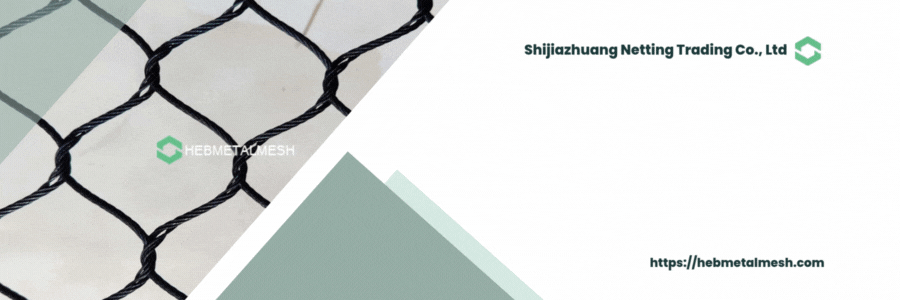Introduction to Deer Fencing
Deer fencing is an important aspect of wildlife management, particularly for homeowners and agricultural producers in regions where deer populations are high. The significance of implementing effective fencing solutions cannot be overstated, as deer can cause substantial damage to gardens, crops, and landscaping. To successfully mitigate these risks, it is crucial to understand the deer fence height requirements to prevent jumping and restrict access to desired areas.
The challenge of controlling deer is compounded by their natural agility and leaping abilities. Deer are known to jump over obstacles that they perceive as threats or barriers, and without the correct fencing, they can easily invade properties. A properly designed and installed deer fence not only serves as a physical barrier but can also be a cost-effective solution in the long term. Understanding the necessary specifications, including height and materials, is vital to ensure that the fencing performs its intended function effectively.
Investing in a good fence involves not just selecting the right materials, but also adhering to the specific height requirements that effectively deter deer from attempting to jump over the barrier. Typically, a fence height of at least eight feet is recommended to provide sufficient deterrence against these agile animals. In addition, the use of wire rope mesh can enhance the overall effectiveness of the fence as it can be configured to provide additional physical barriers and visibility, which can reduce the likelihood of deer attempting to jump.
For those living in deer-prone areas, recognizing the importance of investing in durable and appropriately designed fencing is essential. The right fencing solution can preserve the integrity of outdoor spaces while minimizing the costs associated with deer damage over time. Having a clear understanding of the height requirements and implementation strategies is an indispensable part of effective deer management. This insight not only protects gardens but also promotes harmony between human habitation and wildlife.
Understanding Deer Behavior and Jumping Abilities
Deer are known for their remarkable agility and strong physical capabilities, particularly their ability to jump. On average, white-tailed deer can leap up to 8 feet vertically and cover distances of 25 to 30 feet in a single bound. This inherent jumping ability is crucial for their survival, allowing them to escape predators, navigate through their environment, and access food sources effectively. However, understanding the nuances of deer jumping behavior is essential for landowners and those erecting fences to protect gardens and crops.
Several factors can influence a deer’s decision to jump, including the presence of threats, food scarcity, and even the design of a fence. When a fence is perceived as a barrier to food or safety, deer may attempt to jump over it. Interestingly, deer are more likely to attempt jumps when they have a clear, unobstructed view of the other side, making the height of the fence a critical consideration. It is essential to recognize that the height of fences is not a standalone deterrent; surrounding landscape and the deer’s confidence play significant roles as well.
Furthermore, different species of deer exhibit varying jumping capabilities. For instance, mule deer may often be seen jumping with a grace that far exceeds that of their counterparts. Understanding these differences can further inform decisions about deer fence height requirements. Ideally, incorporating a minimum height of 8 feet with a design that discourages climbing is recommended to effectively deter jumps. Recognizing that deer can easily clear lower barriers should motivate landowners to consider these deer fence height requirements as a key element in their fencing strategy. Enhanced knowledge of deer behavior and jumping capabilities ultimately supports more effective preventative measures against deer incursions.
Factors Influencing Deer Fence Height Requirements

When establishing a deer fence, the height is a critical determinant in effectively preventing deer from jumping over. Several factors play a role in determining the necessary deer fence height requirements, including terrain, species of deer, presence of attractants, and seasonal variations.
The terrain can significantly influence how tall a fence needs to be. For instance, if the area around the fence features hilly and uneven landscapes, deer may have an easier time launching themselves over a shorter fence. Conversely, in flatter terrain, a lower fence may suffice, although it should always be evaluated in conjunction with other factors influencing deer behavior.
The species of deer present in the area is another important consideration. Different deer species have varying jumping abilities; for example, white-tailed deer are known to leap as high as eight feet. Therefore, in regions where these species are prevalent, it is crucial to adhere to the higher end of deer fence height requirements for adequate protection. Understanding the local fauna will enable landowners to gauge how diligent their fencing efforts need to be.
Furthermore, the presence of attractants such as gardens, crops, and feed piles can cause deer to test the limits of their jump capabilities. These attractants may urge deer to attempt to overcome higher fences, necessitating an evaluation of the specific fencing options, potentially increasing height to thwart their efforts. Seasonal variations also influence deer behavior; during mating season, deer may become more aggressive and determined to access certain areas, thereby increasing the urgency to meet the necessary deer fence height requirements.
By assessing these factors comprehensively, individuals can tailor their fencing strategy to better suit their unique circumstances, ensuring that the chosen height effectively deters deer and protects valuable landscapes.
Recommended Deer Fence Height: Industry Standards
When it comes to determining the appropriate deer fence height requirements to prevent jumping, industry standards play a crucial role in ensuring effectiveness. Understanding the different heights available and their respective performance can significantly influence your fencing decision. Typically, the recommended height for deer fences ranges from 8 to 10 feet. These measurements have been established based on extensive research and practical observations regarding deer behavior, particularly their jumping abilities.
Deer are known to leap impressively high, often achieving heights of up to 8 feet when startled. Therefore, installing a fence that stands at 8 feet is generally considered the minimum height for providing adequate protection against deer intrusion. Though this can be effective in many scenarios, it is essential to recognize that some deer, particularly those accustomed to evading barriers, might still attempt to jump over even higher fences. Consequently, a height of 10 feet can offer enhanced security and peace of mind for property owners looking to protect their gardens or orchards.
In addition to the physical height of the fence, the design and materials used also contribute to its overall efficacy. Fences constructed with wire rope mesh can be particularly effective, as they provide both strength and flexibility. Moreover, features such as angled tops, which extend outward from the vertical posts, may deter deer from attempting to jump over the structure. Therefore, when considering deer fence height requirements, it is imperative to take into account both the height of the fence and the characteristics of the installation. By aligning these factors with the established industry standards, property owners will be better equipped to make an informed choice regarding their fencing needs, enhancing their efforts to keep deer at bay.
Why Wire Rope Mesh is the Ultimate Choice for Deer Fencing
When it comes to fencing solutions designed to prevent deer from accessing protected areas, wire rope mesh stands out as a premier choice. Among the various materials available, wire rope mesh, particularly that constructed from stainless steel 304, offers unparalleled durability and strength. This grade of stainless steel is highly regarded for its resistance to corrosion and rust, ensuring that it can withstand environmental challenges while maintaining its structural integrity over time.
The effectiveness of wire rope mesh in deterring deer is primarily attributed to its robust design and height flexibility, which are critical when considering deer fence height requirements to prevent jumping. Deer are notorious for their ability to leap impressive heights, often exceeding six feet. To combat this, wire rope mesh can be configured to achieve suitable heights while still remaining visually unobtrusive and aesthetically pleasing. This adaptability allows homeowners and landowners to customize their fencing solutions to fit specific needs and environments.
Moreover, wire rope mesh is not only functional but also practical. Its lightweight yet sturdy composition allows for easy installation and maintenance, making it a preferred option for builders who prioritize efficiency and reliability. Unlike more traditional fencing materials, wire rope mesh provides a clear view and does not obstruct natural surroundings, enhancing landscape appeal while still serving its primary purpose of deterring deer. Additionally, the mesh design prevents deer from attempting to jump over, as the interconnected layers make it difficult for them to gain traction or leverage. This quality reinforces the importance of understanding deer fence height requirements, ensuring that the structure remains effective in preventing intrusions.
Ultimately, when considering options for deer fencing, wire rope mesh crafted from stainless steel 304 emerges as an optimal solution that combines durability, functionality, and aesthetic value, making it the go-to material for serious builders committed to effective deer deterrence.
Color Options that Blend with Nature: Nature and Black Oxide
The selection of color for your deer fence plays a significant role in not only aesthetics but also functionality. A fence that is visually appealing and integrates seamlessly into the surrounding environment can serve as an effective barrier against deer while enhancing the overall appearance of the landscape. Two popular color options—nature and black oxide—have emerged as top choices among property owners concerned with both practicality and visual integration.
The ‘nature’ color option typically features earthy tones that mimic the natural elements of forests and gardens. These hues blend well with foliage, trees, and grass, allowing the fence to maintain a low profile in its environment. As deer are naturally inclined to avoid obstacles that do not appear threatening or out of place, a nature-toned fence can effectively fulfill the deer fence height requirements to prevent jumping by serving as a non-disruptive deterrent.
On the other hand, the black oxide finish adds an appealing contrast to green landscapes. This darker shade tends to visually recede into the background, thus contributing to the overall beauty of the outdoor space. Additionally, the black oxide option provides a sleek modern aesthetic, appealing to those who favor a contemporary design. A well-placed black oxide fence can stand tall and effectively meet deer fence height requirements to prevent jumping while also becoming a complementary feature in modern landscaping designs.
Ultimately, the choice between nature and black oxide should be based on personal preference, surrounding vegetation, and the desired visual impact. A thoughtfully selected color can not only enhance the deer deterrence functionality, meeting necessary deer fence height requirements to prevent jumping, but also ensure that the fencing gracefully coexists with the landscape.
Common Questions About Deer Fence Height Requirements
The question of how high a deer fence should be is often posed by individuals looking to protect their gardens or crops from deer intrusion. Generally, a height of at least 8 feet is recommended for deer fences. This measurement aligns with the height at which most deer can comfortably jump, thus providing effective prevention against their attempts to leap over the barrier. However, some experts suggest going higher than 8 feet in areas with particularly agile deer populations, so that additional safety measures are in place.
The recommended deer fence height for most situations is 7 to 8 feet tall. Deer are strong jumpers and can clear lower barriers, but a 7-8-foot fence disrupts their ability to leap over safely. For areas with high deer pressure, an 8-foot fence is optimal. Pairing this height with a sturdy material like polypropylene or metal mesh ensures durability.
Yes, a 6-foot deer fence combined with additional deterrents (like motion-activated sprinklers or deer-repellent plants) may work in low-pressure areas. However, this depends on local deer behavior. If deer are persistent, prioritize the standard 7-8-foot height to avoid gaps in protection.
The material itself doesn’t change the required height, but visibility matters. For example, a black poly deer fence blends into landscapes and may appear less obstructive, deterring deer from testing it. Metal fences, while sturdier, may require the same 7-8-foot height since deer jump based on perception of barriers.
To stop deer from crawling under, bury the fence 6–12 inches underground or bend the bottom 12 inches outward into an L-shape. This “dig-proof” installation complements the fence height, creating a full barrier.
Yes, some municipalities restrict fence heights, especially in front yards or historic areas. Always research local deer fence height regulations before installing. Rural properties often have fewer restrictions, but suburban areas may limit fences to 6–7 feet unless granted a permit.
On sloped ground, adjust the fence height to account for elevation changes. Deer may exploit lower points, so ensure the fence is 8 feet tall on downhill slopes. Use flexible materials like deer netting to contour the land smoothly, avoiding gaps.
Overall, understanding deer fence height requirements and related factors is essential for effective wildlife management. Addressing these common questions provides insight into how to effectively deter deer, ensuring both user satisfaction and effective usage of fencing solutions.
Maintenance Tips for Your Deer Fence
Regular maintenance of your deer fence is crucial in ensuring that it remains effective in keeping unwanted deer at bay. One of the first steps in maintaining your fence is to perform routine inspections. Schedule these checks at least twice a year, ideally in the spring and fall, to identify any damage caused by weather elements, livestock, or wildlife. Look for areas where the wire may be sagging, sections that are torn, or any gaps that could allow deer to jump over or squeeze through.
If you detect any damage during your inspections, prompt repairs are critical. Use high-quality materials that are consistent with the original construction to ensure that the deer fence height requirements are met, and the overall integrity is maintained. This includes re-tightening wires, replacing broken posts, and filling in any gaps effectively. Keeping the fence uniformly maintained not only enhances its appearance but also ensures its deterrent properties remain intact.
Furthermore, preventive measures can significantly enhance the longevity of your fence. Clearing the surrounding area of tall grass, shrubs, or debris is essential, as these can provide footholds for deer attempting to jump or scale the fence. Installing additional deterrents such as motion-activated lights or sounds can also reinforce your fence’s effectiveness. Remember, the goal is not just to meet the deer fence height requirements to prevent jumping, but to create an overall barrier that remains effective over time.
Additionally, consider weather factors that impact your fence’s structural integrity. Heavy snow or strong winds can exacerbate issues, so it may be beneficial to invest in additional support during harsh seasons. By committing to regular maintenance, timely repairs, and preventive measures, your deer fence will not only comply with necessary height requirements but will also serve you effectively for many years.
Conclusion: Invest Wisely in Deer Prevention
In addressing the challenge of deer infiltrating gardens, orchards, and fields, understanding deer fence height requirements is paramount. It is widely recognized that the effectiveness of a deer fence largely depends on its height and material, as deer are known to jump over smaller obstructions when they are motivated by food sources. Research indicates that a fence height of a minimum of eight feet is necessary to prevent a determined deer from clearing the barrier. However, taking into account added factors such as the type of fence and its construction, ensuring that the deer fence height requirements are adequately met can significantly reduce the risk of deer access.
Additionally, it is essential to consider the use of effective materials, such as wire rope mesh, which provides not only height but also strength and durability against deer attempts to breach the fence. The spacing of the mesh must be appropriately designed to ensure that even younger or smaller deer cannot slip through. Employing the best practices in constructing a deer fence can yield long-lasting results, safeguarding your landscape investment from potential damage.
Moreover, investing wisely in deer prevention strategies is not merely a matter of aesthetics but also of economic sense. A well-constructed fence prevents the financial setback associated with deer damage to crops and gardens. Therefore, prospective owners should not underestimate the importance of investing in the right deer fencing solutions to create a secure enclosure. As you consider the best practices laid out in this guide, we encourage you to take action towards establishing a robust deer prevention strategy that aligns with your specific needs. With determined efforts in ensuring proper deer fence height requirements are met, you can effectively safeguard your investments and enjoy a thriving landscape.



